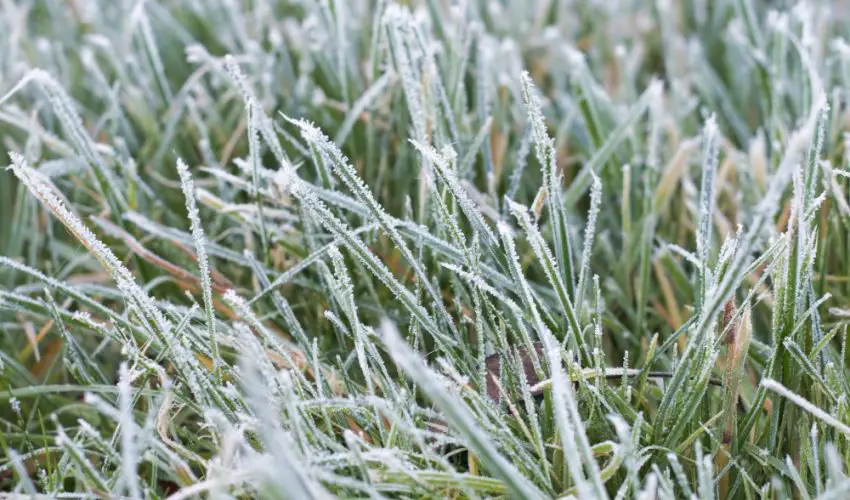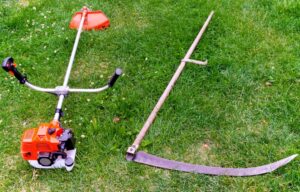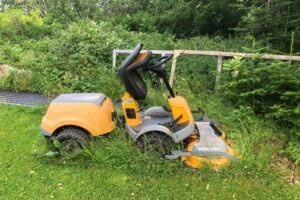Depending on where you live, your grass will react slightly differently to the winter. In colder climates such as the Northeast region of the United States, grass will go dormant during the winter and have a tan or brown color.
Table of Contents
ToggleIt is true that colder temperatures and shorter days will certainly slow down the growth of your grass. Assuming your grass is healthy otherwise, the cold temperatures will not kill your grass. Grass blades actually will go into a stage known as “dormancy.” They will become dormant due to desiccation.
Desiccation is most common in climates that are both cold and windy. Let’s take a look at how desiccation occurs, how it affects your grass and how to prevent damage to your lawn during the winter.
What is Desiccation?
Desiccation is when moisture is removed from grass. Desiccation is commonly seen in cold and windy areas. The cold winds cause the grass to lose its moisture. Coupled with the fact temperatures are quite low, roots will begin to freeze. When the roots are frozen, the grass can not take up any water to rehydrate the blades. The moisture lost from the grass due to the cold winds can not be reproduced with frozen roots. This is the cause of brown grass in the winter.
In fact, homeowners report seeing more brown grass on west-facing areas of their property. This is because there is no protection from the gusting winds. However, keep in mind that even with desiccation, your grass is still not dead. As soon as the weather warms up in early spring and temperatures increase, your grass will perk back up.
This typically occurs in late March to early April. With the warming up of temperatures comes an increase in growth. Your grass will start growing again and will be ready to mow in no time. The good news is severe lawn damage can be prevented with the right strategies in place. Let’s take a look at the many tips and tricks to ensure your grass remains as healthy as possible during the winter months of the year.
How to Prevent Lawn Damage in the Winter
Continue mowing your lawn until the temperatures are cold enough that the grass stops growing. Furthermore, never mow below 3 inches as grass does not respond well to this.
Keep up your irrigation methods and continue to water until late November (if area does not receive substantial rainfall).
Make sure to remove leaves from your lawn as new growth is highly sensitive. When removing leaves, use a blower instead of a rake.
Fertilize later in the fall. By doing this, you get similar benefits to antifreeze, but naturally. Your grass will be able to tolerate the cold easier, maintain lawn density and prepare for healthy and abundant growth in the spring. By fertilizing late in the fall, the grass will be hardier and stimulate the last bit of root growth before the winter begins.
Walking on frozen grass can cause damage to it. When grass is frozen, it becomes more sensitive in the crown areas. If you are walking over frozen grass, it is possible you are killing certain spots of it.
What Does Dead Grass Mean?
When your grass is dead, this means it will not come back to life. Regardless of good weather and the amount of water it has, it will not revive itself. In this scenario, you will have to reseed the lawn or replace the grass entirely.
What Does Dormant Grass Mean?
It is common for grass to go dormant in parts of the United States and around the world where winter temperatures are cold and drop below average. Keep in mind that dormant grass does this in order to stay alive. It conserves energy that would otherwise be used to produce lush green blades and allocates it for the survival of the roots and crown.
Difference Between Dead and Dormant Grass
While dead grass and dormant grass may look similar at first glance, they are entirely different. The brown color may lead you to believe otherwise, however, there is still hope for your lawn. There are a few key ways to tell your grass is dormant, not dead or vice versa.
First and foremost, if your grass is dormant, it will go uniformly brown. In other words, a dormant lawn will go brown all at once to conserve energy. Dormant grass goes into this stage with the intention of saving enough energy to stay alive. It will send the only resources it has to the crowns and roots of the plant to stay alive.
On the other hand, if patches of your grass look brown or dead, the first thing you need to do is check is your irrigation methods. The brown spots could be due to inadequate water in those areas, thus turning them brown.
If your irrigation system is working properly, then you need to check for disease or pests. Also, if you have dogs at home that use one spot on your lawn consistently to relieve themselves, this can cause the grass to die.
Perhaps the best way to determine whether or not you have dead or dormant grass is to use water. By increasing irrigation for a couple of days, you’ll be able to pinpoint the problem. With dormant grass, an increase in irrigation will turn the blades green again.
If the grass does not start to “green up,” it is most likely dead. However, it is important to note that in winter conditions and very cold temperatures, you may need to wait until the weather warms up again to see the grass restore its natural color. As spring introduces water temperatures, you’ll be able to confirm if you have dead grass or dormant grass.




